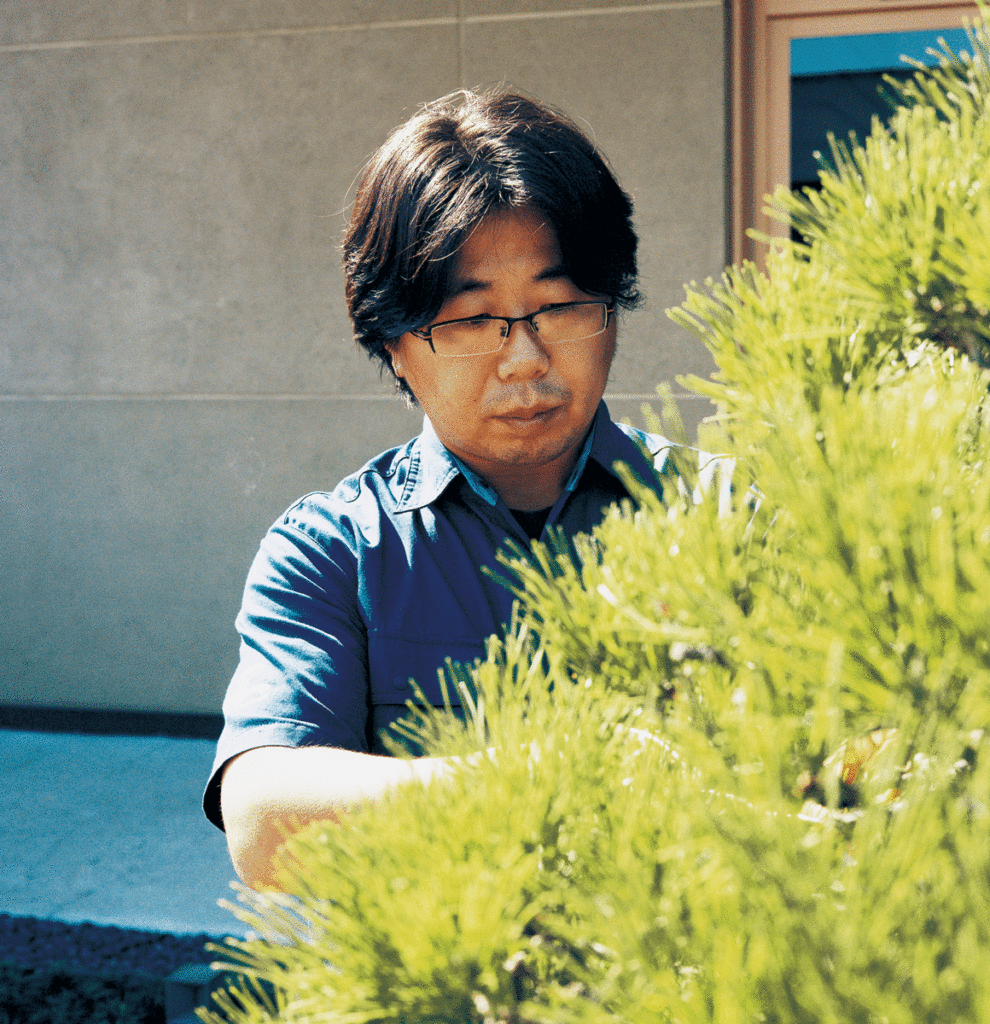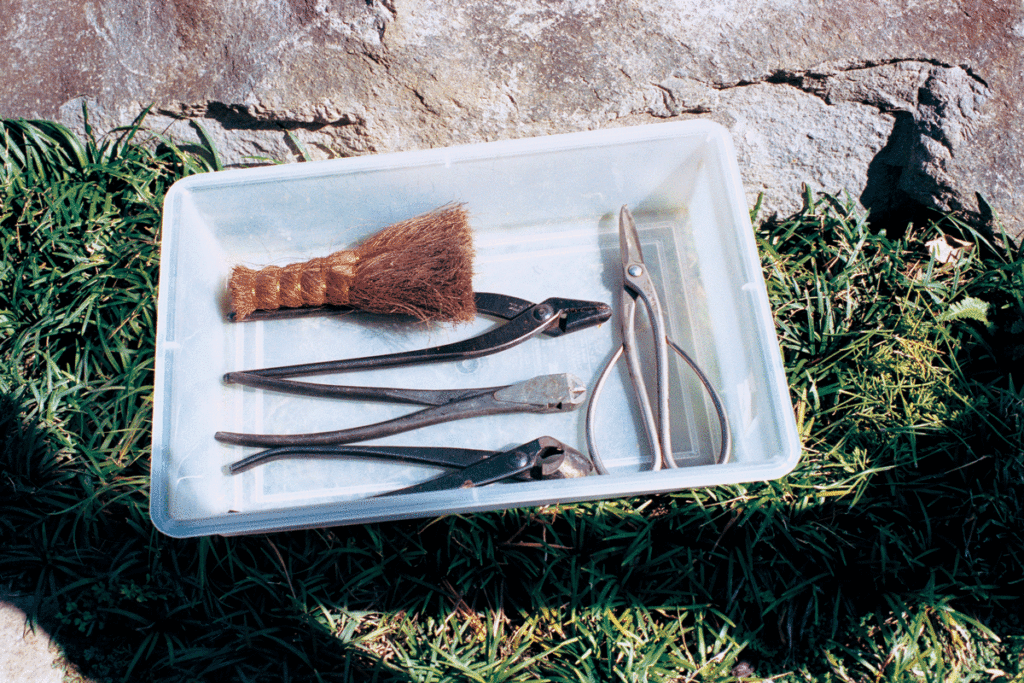Story 01 | Yoshinobu Tabata: Elderly, sick and deciduous.
Controlling the beauty of the natural world is difficult, time consuming and often impossible. Yet, we try. That hasn’t stopped us from domesticating beautiful beasts or clipping the wings of birds so that we can enjoy their plumage (without having them fly away), or bringing parts of the natural landscape into out homes — flowers, trees and rocks.
In Japan and China, this control of the natural landscape has been raised to a kind of ritualistic art. In China it was called penjing’ and sometime between 1185-1333 it travelled to Japan and was named Bonsai. It is the art of growing miniature trees which evoke the natural landscape.
“Growing a Bonsai is like taming a Lion to become a pet, it is that difficult,” Tabata says, looking out of a window at dozens of Bonsai; some decades old, some centuries old, all making the same asymmetrical shadows on the grounds of Omiya’s Bonsai Museum. The 37 year old, is a Bonsai Gishi (bonsai technician) at the museum, his job is caring for the health and wellbeing of the plants here.

Walking through the museum’s collection Tabata speaks about each plant as though it were a person, commenting on their names (famous or important Bonsai are given unique names). It feels more like a guided tour around a retirement home for plant people.
“The most important thing for a Bonsai Gishi is knowing the plants you are working with. Even if there are ten examples of the same species of pine tree they will all have distinct personalities. Some trees need a lot of attention, others need a little, and there are other more subtle characteristics too.” However, Tabata stresses that tree’s can’t be wholly treated like people, “humans must balance out their strengths and weaknesses, with a Bonsai you just cut out the weak parts.”
Tabata first came to Omiya as an apprentice after finishing high school in his hometown, Kagoshima, in Southern Japan. His father was one of the few local Bonsai enthusiasts and pushed him to move to the Bonsai capital of Japan and work for a nursery. Here Tabata discovered and learnt the origins of the Bonsai Village, and the reason that Bonsai nurseries were declining. The first blow was Tokyo’s devastating 1923 earthquake and fire, after which all the nurseries moved further North to Omiya, because it had good water, soil and was a little cooler than other areas” says Tabata. The second blow was the firebombing in World War II, and today there are only around 10 nurseries left here.
Unexpectedly, the patronage of occupying American forces (at the behest of General MacArthur) likely helped keep even that small number in business.Such a decline in an ancient tradition is saddening — perhaps even humbling — and reinforces the idea that no matter how much you have under control, something always goes wrong. These words are formed slowly. Like other Bonsai workers Tabata is never slothful, but measured, and he measures these final words carefully: “I think that is the one aspect of Bonsai that really interests me.
< PAPERSKY no.37(2012) >












